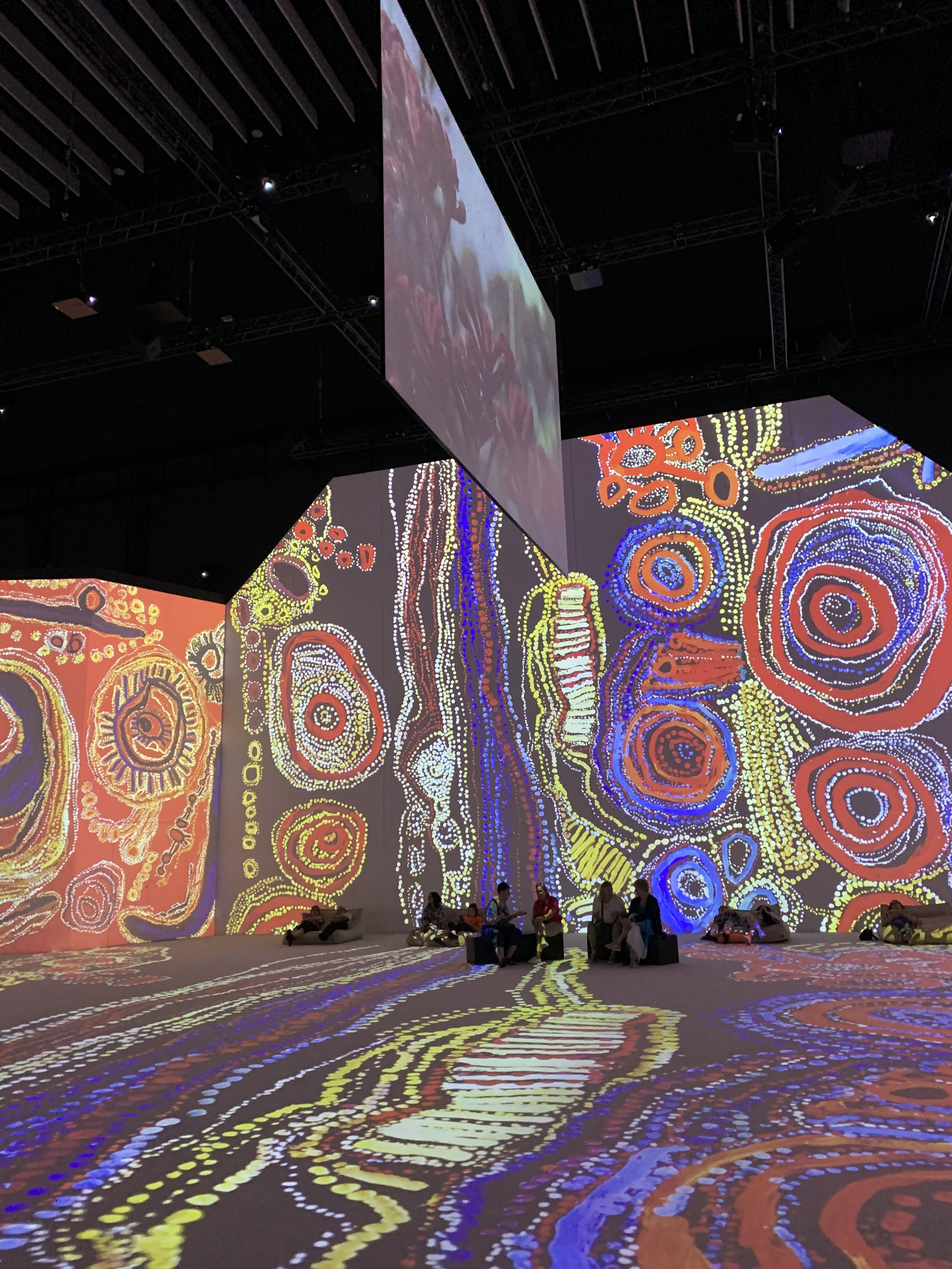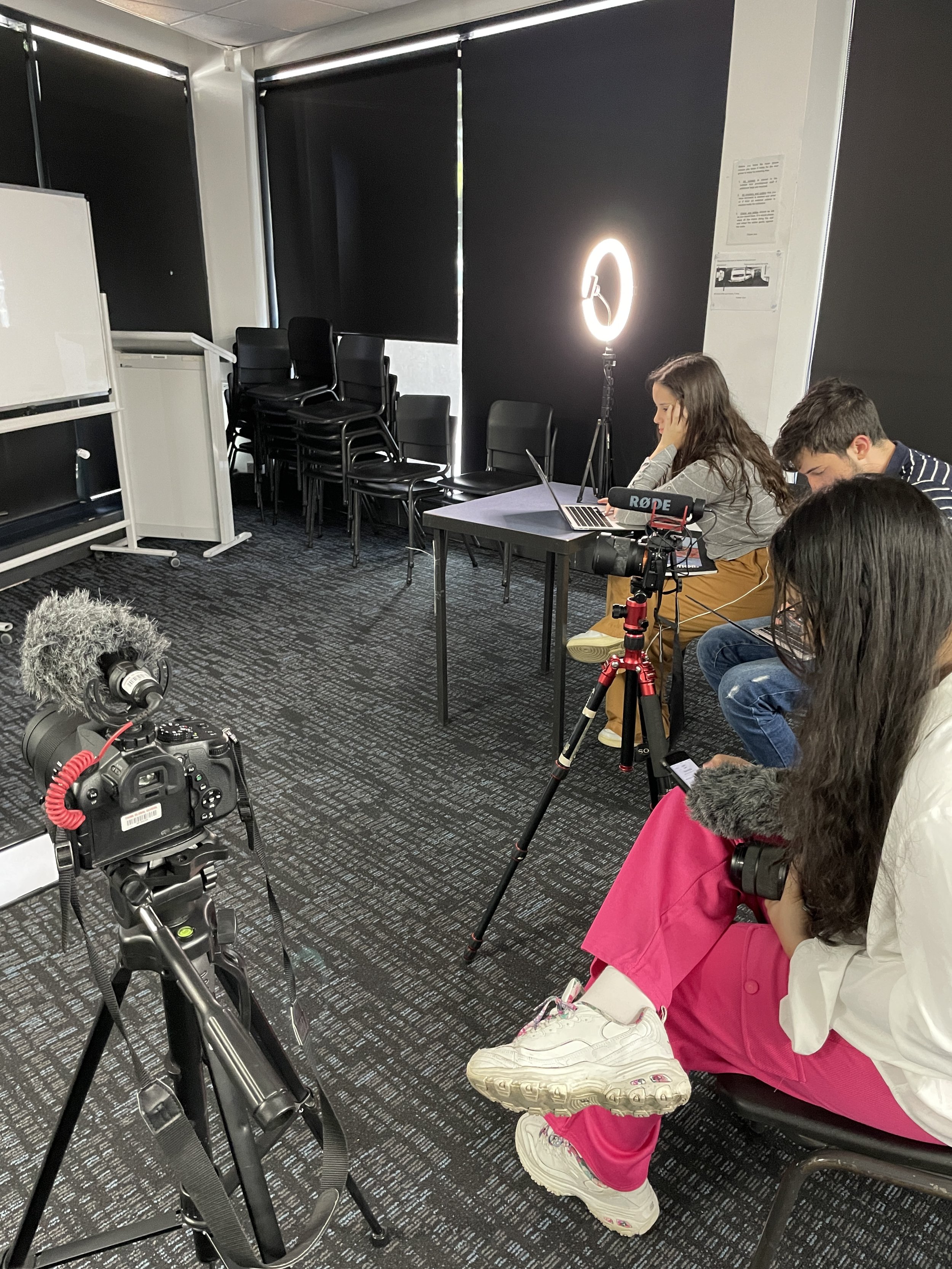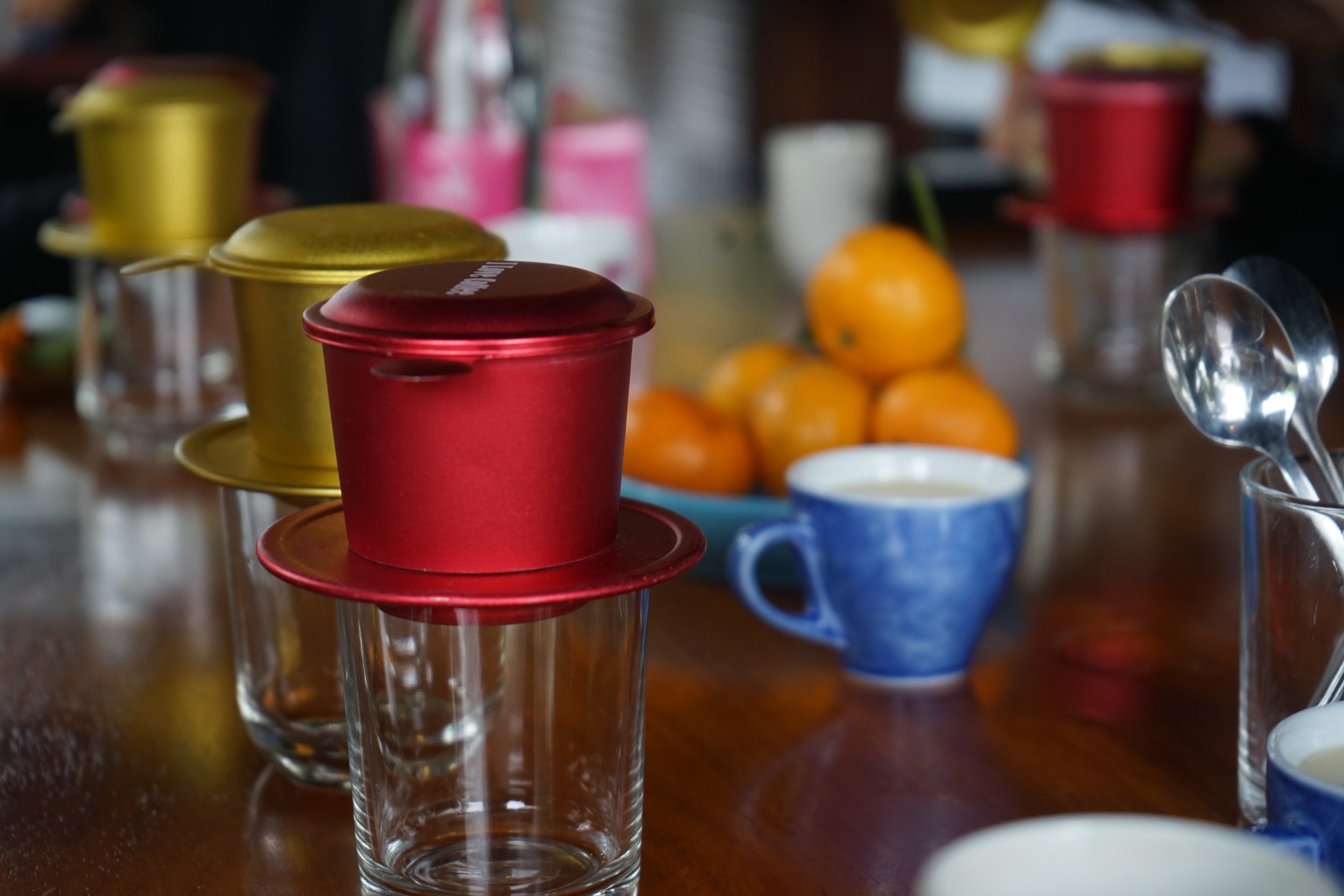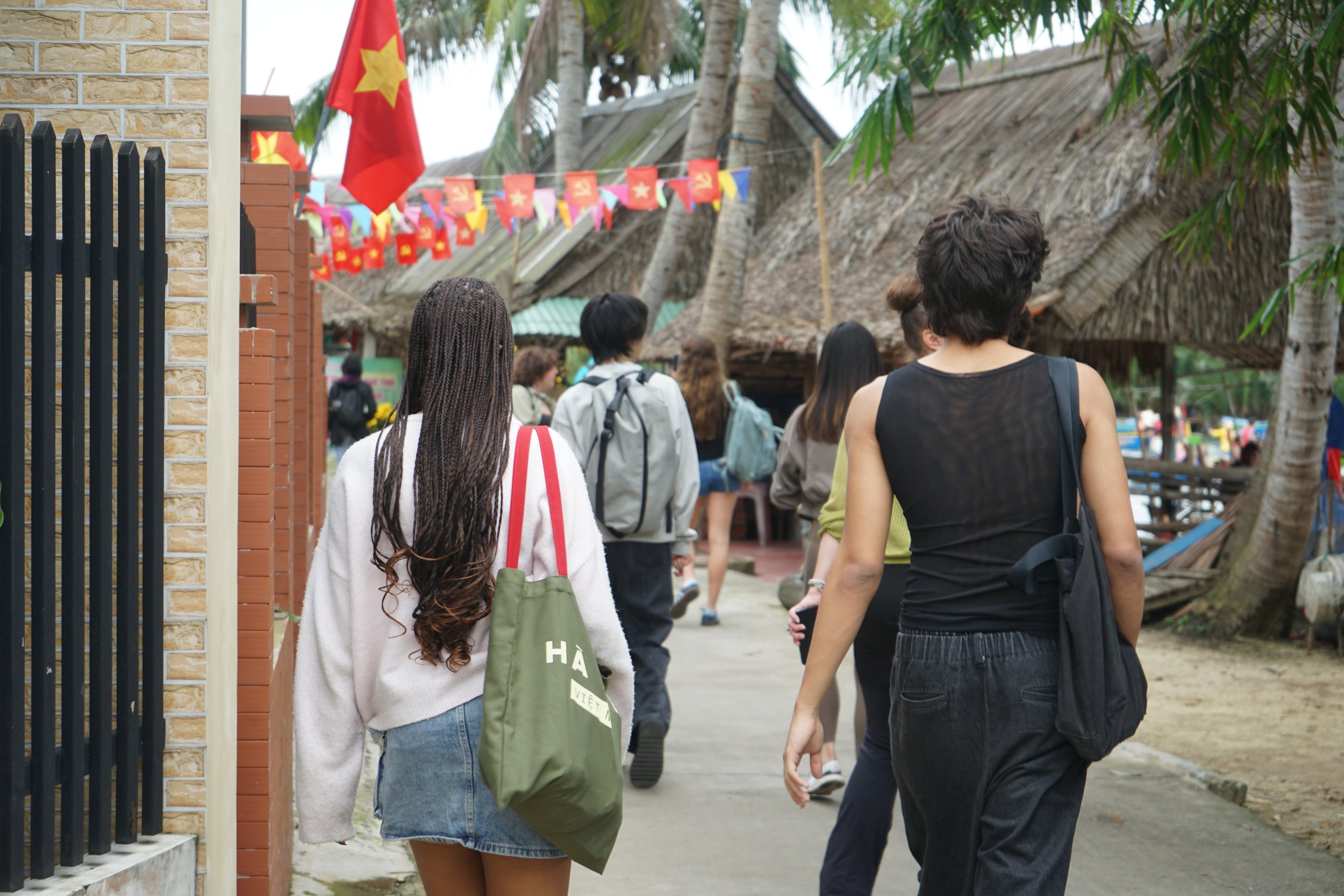
Modules
What Are Modules?
At THINK Global School, Modules are educator-led group projects in which students explore a topic of their choice related to the country they are visiting. Four modules are studied in a year (one per term), during which students go on various excursions indulging in both primary and secondary research to understand the topic they chose to focus on. In doing so, students gain a deeper appreciation for their host country and produce a summative product to showcase their learning journey.
Bosnia and Herzegovina
Bosnia and Herzegovina
“Social Messages”
Driving Question
“How can art be used to convey a narrative of post-conflict unity whilst addressing a specified aspect of the war's legacy?”
Summative
My poster is a digital representation of a tarot card created using PhotoShop. Tarot cards also often have words associated with imagery displayed on each card, and I chose to use the same concept for my art piece. The words apparent on my poster are “The Trinity,” which represents the three ethnic groups (Bosniak Muslims, Croats, and Serbs) because they rely on each other to make the country of Bosnia and Herzegovina what it is (despite the fact that peace is still something that the nation is striving for). I incorporated the Latin Bridge as another main element to show the concept of withstanding and persevering through hardship. Finally, the Sarajevo Rose is representative of an objective for peace. Sarajevo roses are all over the city because they are an important part of the culture in this country, turning something tragic (missile scars) into something beautiful (red roses). In the same way, the sun in my poster is a Sarajevo rose because it sheds a new light on peace in a country that still has lingering ethnic tension.
Description
In this module, I learned about conflict resulting from the break-up of the former Yugoslavia. I used this as a base to explore the historical role of social activism and art in confronting conflicts around the world, then applied my learning to the plethora of paintings and murals around Sarajevo and its environs. My final product showcases a combination of my personal beliefs about the validity and role of war in society expressed through the power of art.
Australia
Australia
“I See You”
Driving Question
“How can we use media to respectfully share Indigenous Australian Dreamtime stories and cultural knowledge while honoring Aboriginal rights and sensitivities?”
Summative
Through information gained from our experiences, excursions, and interviews that we conducted, we created short films, including footage shot ourselves and animations that we illustrated to explore the concept of "land" while understanding the depths behind Aboriginal art. These films were displayed through an immersive experience at our in-country showcase including projected media, indigenous diffused scents, and traditional and modern Aboriginal music.
Description
In this module, we got the opportunity to embark on excursions, including a day trip to the Lume, Melbourne (an immersive Aboriginal art museum) and Narana Cultural Centre (a center that educates visitors about Aboriginal culture and hosts animals including emus, kangaroos, and wallabies). We also had the opportunity to interview Prof. Wayne Quilliam, an Aboriginal artist who is also the curator of the Lume, and Aunty Sherri, an Aboriginal woman and author. Furthermore, over our WeXplore trip to Innesvale, Cairns, we experienced living with the Goondoi Aboriginal community, where we witnessed a traditional initiation dance, experienced a saltwater welcoming ceremony, learned about Indigenous animals and wildlife, went on a night boat tour of the surrounding land, and interacted with children at Radiant Life College, a local school. In the process, we learned about traditional hunting and cooking practices..
Japan
Japan
“The Last Samurai”
Driving Question
“How does the study of the mystique, traditions, and fierce fighting skills of the Samurai warrior contribute to the transformation of the Samurai into a cultured gentleman warrior, poet, and aristocrat - and what insights does this transformation offer into the evolution of Japanese society and culture through a theatre piece?”
Summative
Our one-act play focused on a collection of what we learned throughout the module and was titled “The Next Samurai.” It explored several philosophical concepts by having an unconventionally unhappy ending. I was the director of this play, which meant that I ensured everyone had a role, knew their lines, and was well-rehearsed. I also opened our performance by introducing our play to the audience at our showcase event.
Description
In this module, we learned about the study of mystique, traditions, and fierce fighting skills of Samurai warriors. We learned about how these contribute to the culture of etiquette held by Samurais through the Bushido code, a code of certain values followed by the Samurai (righteousness, courage, benevolence, respect, honesty, honor, and loyalty), as well as the culture of being a gentleman warrior, poet, and aristocrat. We learned about Samurai culture and history through various experiences such as learning karate, doing a katana and ninja star-wielding workshop, attending a traditional tea ceremony, and much more. We then learned about the intricacies of theatre and philosophy and how to write play scripts. We produced an original play with a storyline and script written ourselves, combining these elements into a one-act play called “The Next Samurai.”
Greece
Greece
“You’re So Eco”
Driving Question
“How might crisis drive humans towards a more harmonious relationship with nature?”
Summative
Our summative was a day spent on Agistri Island doing guide tours for our fellow peers. Examples of the tours included a guided hike, a food and beach tour, an electric bicycle tour of the island, and a cliff-jumping/ snorkeling activity to finish off the day. We each included mythology, pricing, and eco-tourism elements for each tour.
Description
Students will dive into the history of tourism in Greece and modern-day Ecotourism. They will then explore Athens as an eco-tourist to experience first-hand the incredible sights and experiences that Athens has to offer before considering the effects of environmental, social, and financial crises on nature to investigate the changing relationship between people, place, and time. To learn about this topic, we went on a variety of excursions, including harvesting organic vegetables at Kentro Di Gis, learning to make spankopita at a cooking class, visiting a turtle rescue center, going on a guided hike through the Athenian hills, and doing a myths and plants tour at the Athens National Gardens.
Canada
Canada
“Quake Quest”
Driving Question
“How can we improve earthquakes preparedness in Vancouver through collaboration and innovation?”
Summative
For my summative, my module partner and I created a "Twister" board game inspired by what we learned about earthquakes. The Twister mat was placed on an air mattress simulating an earthquake and had the classic color-spinning wheel. It included "positive" and "negative" cards entailing different earthquake scenarios that either led you to place your hands and feet on the Twister mat or take them off, depending on the card. It also included wild cards with probability questions that gave your team bonus points.
Description
Through this module, we aimed to explore earthquakes' history, societal impact, and how countries manage them, and incorporate probability and stats. We aimed to explore earthquakes' history, societal impact, and how countries manage them. Additionally, we examined how geology and technology contribute to earthquake prediction and preparedness efforts. This integrated approach provided insights into how advancements in both fields help mitigate the effects of seismic events on communities.
Brazil
Brazil
“Narrative of Life”
Driving Question
“How can we use multimedia literary expression to tell the story of conservation of biodiversity in Brazil?”
Summative
In order to wrap up our learning, we created a summative that intersects bioacoustics, conservation of the Amazon, and creative writing/ music. My summative partner and I created a story that personifies nature by transforming it into a woman who experiences numerous exploitative relationships before becoming irreparably ruined. We used various songs as a source of inspiration including "You Know I'm No Good" by Amy Winehouse, "Copacabana" by Barry Manalow, "Girl From Ipanema" by Stan Getz, and "Cherry Wine" by Hozier. We also used inspiration of a story told through song by the women from the poetry workshop. Here is the performance that we did at showcase.
Description
Throughout this module, I explored nature conservation in Brazil through bioacoustics and intersected it with creative writing. In order to learn about these topics, I went on a series of excursions, including a full-day boat outing to learn about the use of bioacoustics in marine conservation, the history of Salvador, and the benefits of marine protected areas. I visited a reserve transformed from grasslands to a rainforest through agroforestry. I also engaged in a singing and poetry workshop in which I learned about vocal, bodily, and instrumental expression.
My favorite part of the module was our WeXplore, in which we took a five-day trip to Santarem and experienced Brazil's Amazon forest in various ways. We partook in a mushroom inventory to keep track of the various species in the area, did a frog inventory to study frogs native to the area, and did a fluorescence and bioluminescence inventory in which we looked for scorpions, bioluminescent mushrooms and other fluorescent organisms. We learned the importance of salvaging islands in the Amazon by planting trees on one of them. We followed this experience with a relaxing swim in the river surrounding the island, learning about the "moon-walk" technique used to avoid stingrays. We also spent at least twelve hours on a boat, during which we did a bird-watching inventory by taking pictures of birds from the boat and numerous islands that we stopped to walk around. Furthermore, we set up camera traps in reserve in the Amazon forest and collected data from them, tracking the abundance and variety of animals in the area. We completed our stay by watching and participating in a Carimbo performance, a dance/ musical style that has a combination of Afro-Brazilian and Indigenous roots. Our last meal was a variety of Indigenous foods ranging from shrimp soup to arrowroot.
Vietnam
Vietnam
“Cafeture”
Driving Question
“How can I design a cafe space with a signature drink to embody the modern culture and past heritage of Vietnamese coffee?”
Summative
My summative for this module was designing my cafe and signature drink. This is the description of my cafe, "At our café, every cup, every product, and every detail is a celebration of cultural exchange—an invitation to slow down, connect, and experience the world through fresh eyes. Nestled in the heart of Hanoi and on the edge of Westlake, Kahawa is a sun-soaked escape inspired by the vibrant energy of a tropical beach holiday in Kenya. We set out to create more than just a place to grab coffee—we built a bridge between cultures. Our cafe draws attention to African diasporas worldwide while celebrating the richness of both Kenyan and Vietnamese coffee traditions. Upstairs, our Maasai Market is a treasure trove of creativity, showcasing handcrafted jewelry, art, and fabrics from African artisans living in Vietnam. We believe in community and inclusivity, so you'll also find beautifully crafted Vietnamese products that support local talent and weave a tapestry of global stories. Step inside, and you'll find yourself transported: sandy floors cushion your feet, stone walls echo the charm of Kenyan coastal homes, and each sip of our tropical-inspired drinks carries the essence of a beachside breeze. Our menu is a harmonious blend of the bold, aromatic flavors of Kenyan coffee and the smooth, robust notes of Vietnam’s finest brews." I also created an extensive menu with drinks based on beaches around Kenya and Vietnam, and created a 5D model of the interior aspects of my cafe.
LINK to Menu
LINK to Storyboard
Description
My module this term explored the driving question, "How can I design a cafe space with a signature drink to embody the modern culture and past heritage of Vietnamese coffee?" We attended a 2 day barista course in which I was able to learn different aspects of coffee-making and catering to customer satisfaction. I learned about how the two different kinds of coffee are grown, separated, dried, processed, and distributed. We also did a drink building competition in which we designed a signature coffee. The drink that I made was a yakult strawberry coffee. This was done through mixing strawberry syrup with yakult in a glass, then whisking a shot of espresso until it foamed up in a separate cup. Then, I added the yakult mix to a cup over ice and topped it off with the whisked coffee. I won the drink building competition because the judges thought I had a good balance of flavors, which I was grateful for. We then got certified as "Basic Baristas". We also went on a WeXplore trip to Hoi An and went on various excursions such as going to the Phin Lab Roastery, learning about the interior design of the Slow Cafe, and visiting a gallery cafe. We also learned to make traditional Vietnamese interior design elements by doing a lantern workshop.
Italy
Italy
“Driven By Design”
Driving Question
“How can the principles of Italian car design inspire the creation of an innovative fashion piece that combines functionality with aesthetic appeal?”
Summative
My summative for this module was to design an original fashion piece that combines aesthetic appeal and functionality while collaborating with a car brand. My summative partner and I chose to create two different pieces, one based on the idea of the fascist era in Italy, and one based on the Baroque/ Renaissance in Europe as a whole. Our first piece plays on the concept and principles of fascism by exploring concepts of femininity and rebellion as a contrast to the typical masculine, conservative flair of fashion during that time period. Taking inspiration from the traditional black fascist uniform, we used a long, black trench coat as the primary element of the piece, then incorporated a brown broach and tie to further adhere to the fascist look. As a twist, we incorporated a transformation in the outfit by doing a reveal to a second outfit beneath the trench coat— a grey mini skirt and white halter top above brown knee-high boots, as a play on femininity and rebellion. For our second outfit, we used a long, lacey, black and grey dress with black kitten heels and a Venice-style mask, taking inspiration from the Baroque period in Europe. We also chose to incorporate maximalist jewelry and a fan to further adhere to the intense use of accessories in this period. This look is at once classy and seductive, taking a bold approach to this era in Italian history. Our summative was presented at our module-based fashion show with the song “Something in the Way” by Nirvana to complement our first look, and the song “Army Dreamers” by Kate Bush to go along with our second look. We also incorporated projections of images and colors in the background for a cohesive, immersive experience. The overall curation goes along with a vintage Bentley as our collaboration with a car brand.
Description
My module in Italy was based on the merging of the fashion and car industries in Italy. To learn about these topics, we delved into the creative processes and intentionality behind both industries. We went on a series of excursions, including visiting the Ferrari Museum in Modena, going to the Ferragamo Museum in Florence, visiting various fashion houses and attending a workshop by a fashion designer in Milan, visiting fashion museums in Venice, and Rome, and going go-karting. These trips gave us insights into the engineering and artistry of vehicles, while also exploring Italy’s rich fashion scene, revealing the innovation and cultural significance of couture.




































